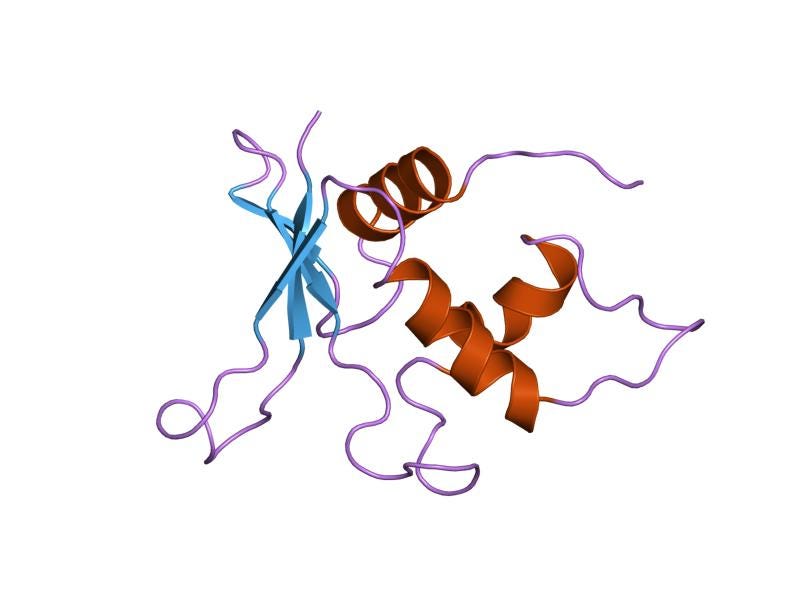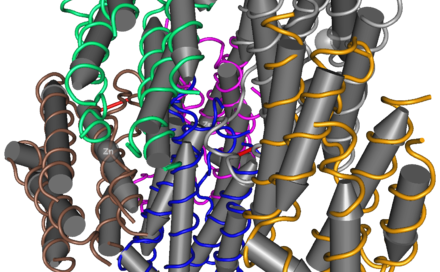Claim: mRNA vaccines cause cancer, myopericarditis, shingles, headaches, etc etc
A new overview of the scientific literature says that this is most likely true
THERE IS VERY GOOD EVIDENCE THIS IS SO
A new study claims mRNA vaccines may cause cancer, myopericarditis, shingles, headaches, etc etc While the complete mechanism is not known, nor is the causal link completely proven, nonetheless what we have is very good circumstantial evidence that this is really happening.
A NEW (APRIL 2022) STUDY INTO THE HARM CAUSED BY THE VACCINES
A new study published in Elsevier’s Food and Chemical Toxicology on sciencedirect, Innate immune suppression by SARS-CoV-2 mRNA vaccinations: The role of G-quadruplexes, exosomes, and MicroRNAs, goes through the scientific literature showing that the vaccines may well be harmful and cause immune suppression. The authors are Stephanie Seneff, Greg Nigh, Anthony M. Kyriakopoulos and Peter A. McCullough. While they openly admit that the causal links have not been established in the majority of cases, they have some good hypotheses for why it could be happening, as well as some decent evidence that it is happening.
Peter McCullough’s name has been slandered widely in the mainstream media for his stance on vaccines. However, we believe on firstfactcheck that to make an ad hominem attack is to commit a logical fallacy. Just saying someone is a bad person does not invalidate their claims or make them a bad person. It is a different matter if someone has been caught out lying, but to my knowledge Peter McCullough’s good character is not in question, but only his conclusions about the vaccines.
In other words, the only question that matters to us is, ‘is there data and proof of this.’
This study has a very broad sweep and goes through the evidence in the scientific literature step by step. Every statement is cited properly.
IMMUNITY DOES NOT LAST
First they make the point that any immunity that the vaccines induce does not last, and that Delta and Omicron both show immune escape, and then point out that the vaccines do not protect the community from the spread of the virus and indeed, may not even protect patients from severe symptoms.
It is now clear that the antibodies induced by the vaccines fade in as little as 3–10 weeks after the second dose (Shrotri et al., 2021), such that people are being advised to seek booster shots at regular intervals (Centers for Disease Control and Prevention, 2021b). It has also become apparent that rapidly emerging variants such as the Delta and now the Omicron strain are showing resistance to the antibodies induced by the vaccines, through mutations in the spike protein (Yahi et al., 2021). Furthermore, it has become clear that the vaccines do not prevent transmission of the disease, but can only be claimed to reduce symptom severity (Kampf, 2021a). A study comparing vaccination rates with COVID-19 infection rates across 68 countries and 2947 counties in the United States in early September 2021, found no correlation between the two, suggesting that these vaccines do not protect from spread of the disease (Subramanian and Kumar, 2947). Regarding symptom severity, even this aspect is beginning to be in doubt, as demonstrated by an outbreak in an Israeli hospital that led to the death of five fully vaccinated hospital patients (Shitrit et al., 2021). Similarly, Brosh-Nissimov et al. (2021) reported that 34/152 (22%) of fully vaccinated patients among 17 Israeli hospitals died of COVID-19.
OK, THE VACCINES DO NOT HELP, BUT DO THEY HARM?
One of the cardinal rules of medicine is “First, do no harm,” a phrase that originates in Hippocrates’ Epidemics, "The physician must ... have two special objects in view with regard to disease, namely, to do good or to do no harm" (book I, sect. 11, trans. Adams, Greek: ἀσκέειν, περὶ τὰ νουσήματα, δύο, ὠφελέειν, ἢ μὴ βλάπτειν)
The aim of the study is to distinguish between the ineffectiveness of the vaccines (they are not doing any good) and the harm they may be causing. At this stage, they say, in most cases the causal links have not been established between the vaccine and the harm it may be causing.
The increasing evidence that the vaccines do little to control disease spread and that their effectiveness wanes over time make it even more imperative to assess the degree to which the vaccines might cause harm. That SARS-CoV-2 modified spike protein mRNA vaccinations have biological impacts is without question. Here we attempt to distinguish those impacts from natural infection, and establish a mechanistic framework linking those unique biological impacts to pathologies now associated with vaccination. We recognize that the causal links between biological effects initiated by mRNA vaccination and adverse outcomes have not been established in the large majority of cases.
INTERFERONS
What emerges again and again for me as I read studies about the microbiology of the cell, RNA and immunity is how incredibly complicated and intricately designed the immune system is. When Darwin wrote On The Origin Of Species, as far as any scientist knew the cell cell had only three parts, the nucleus, the proto-nucleus, and the cell itself.
It is completely awe-inspiring to get a glimpse of how DNA and RNA, immune mechanisms and immune cells all work together to protect the body.
Interferons are signalling proteins in the cell.

They are produced in response to viruses, cancers, and other illnesses. The study authors point out that Type 1 Interferons (IFN) are extremely important in the immune system in responding to viruses, cancer and immune disorders:
Type I IFNs play a powerful role in the immune response to multiple stressors. In fact, they have enjoyed clinical therapeutic value as a treatment option for a variety of diseases and conditions, including viral infections, solid tumors, myeloproliferative disorders, hematopoietic neoplasms and autoimmune diseases such as multiple sclerosis (Passegu and Ernst, 2009).
As a group, IFNs play exceedingly complicated and pleiotropic roles that are coordinated and regulated through the activity of the family of IFN regulatory factors, or IRFs (Kaur and Fang, 2020). IRF9 is most directly involved in anti-viral as well as anti-tumor immunity and genetic regulation (Alsamman and El-Masry, 2018; Huang et al., 2019; Zitvogel et al., 2015).
There are many different types of interferons in the Type 1 family. Very important is Interferon alpha (IFN-α) for helping the body’s cancer surveillance system to recognise tumour cells.
They go through the amazing mechanism in some detail by which Interferon alpha recognises tumour cells and ‘initiates cell death’ for those harmful cells.
IRF7 and IRF9 are Interferon Regulatory Factors - these are proteins that regulate the expression of Interferons.

BRC1 is a gene that protects the body from tumours, Alzheimer’s disease and other neurodegenerative disorders, and other diseases. When IRF9 or IRF7 are released, the DNA in your cells (which is like a sphere with some genes folded in and some out) folds out BRC1, the gene that helps protect the body.
It looks as though the mRNA vaccines might interfere with IRF9 and IRF7 production and therefore BRC1, for three reasons: 1) the spike protein in the virus itself appears to have this effect 2) the vaccines cause cells to produce the spike protein for months 3) the vaccine mRNA is not recognised as well as the virus mRNA by the body as a threat, simply because it was engineered that way.
Vaccination has also been demonstrated to suppress both IRF7 and STAT2 (Liu et al., 2021). This can be expected to interfere with the cancer-protective effects of BRCA1 as described above. Cancers associated with impaired BRCA1 activity include breast, uterine, and ovarian cancer in women; prostate and breast cancer in men; and a modest increase in pancreatic cancer for both men and women (Cancer risk and BRCA1 gene, 2021).
Reduced BRCA1 expression is linked to both cancer and neurodegeneration. BRCA1 is a well-known breast cancer susceptibility gene. BRCA1 inhibits breast cancer cell proliferation through activation of SIRT1 and subsequent suppression of the androgen receptor (Zhang et al., 2016). In a study conducted by Suberbielle et al. (2015), reduced levels of BRCA1 were found in the brains of Alzheimer's patients. Furthermore, experiments with knocking down neuronal BRCA1 in the dentate gyrus of mice showed that DNA double-strand breaks were increased, along with neuronal shrinkage and impairments in synaptic plasticity, learning and memory.
STRONG PROOF VACCINE WORSENS CANCER
Strong proof that vaccination can cause a worsening in existing cancer: a study is cited where, in a patient with lymphoma, there was found to be five times as many cancerous lesions after a booster shot, with twice as much cancerous activity on the arm that was vaccinated. (Goldman et al., 2021)
2021 REVIEW SAID IMMUNITY MIGHT BE A PROBLEM
There was a review in 2021 that said that unresolved issues particularly with the influence of mRNA vaccines on immunity could prove to be a problem:
Rather prophetically, the extensive review by Forni and Mantovani (2021) has raised serious questions about the development of innate immunity by the mRNA SARS-CoV-2 genetic vaccinations. As the authors declared: “Due to the short development time and the novelty of the technologies adopted, these vaccines will be deployed with several unresolved issues that only the passage of time will permit to clarify.”
The persistence of the mRNA in the lymph nodes for up to sixty days post vaccination contributes to the suppression of the body’s cancer protection mechanism:
A recent early-release study has found that the mRNA in the COVID-19 vaccines is present in germinal centers in secondary lymphoid tissue long after the vaccine is administered, and that it continues to synthesize spike glycoprotein up to at least sixty days post-vaccination (Röltgen et al., 2022). This suggests that immune cells taking up the mRNA in the arm muscle migrate into the lymph system to the lymph nodes, presumably in order to expose B-cells and T-cells to the toxic antigen. The persistence of the mRNA in the lymph nodes and its sustained synthesis of SARS-CoV-2 spike glycoprotein reflect the clever engineering involved in the mRNA technology, as described above.
OTHER HARMFUL CONSEQUENCES
They then go through the evidence that the vaccines cause many diseases including Shingles, liver problems, autoimmune diseases, Bell’s Palsy, myocarditis, Guillain Barré syndrome and neurologic injury syndromes, and they go through the evidence in VAERS (the US Vaccine injury database) that this is so, as well as the evidence that cancer has worsened as well.
WHAT DOES IT MEAN FOR PEOPLE WHO HAVE TAKEN THE VACCINE?
This is not medical advice as I’m not a doctor but it seems like common sense: if you have taken the vaccine and you know you have a susceptibility to a certain form of cancer, be alert to the signs, go to the doctor, don’t get to it too late.
BIBLIOGRAPHY
Stephanie Seneff, Greg Nigh, Anthony M. Kyriakopoulos, Peter A. McCullough, Innate immune suppression by SARS-CoV-2 mRNA vaccinations: The role of G-quadruplexes, exosomes, and MicroRNAs, Food and Chemical Toxicology, Volume 164, 2022, 113008, ISSN 0278-6915, https://doi.org/10.1016/j.fct.2022.113008.


